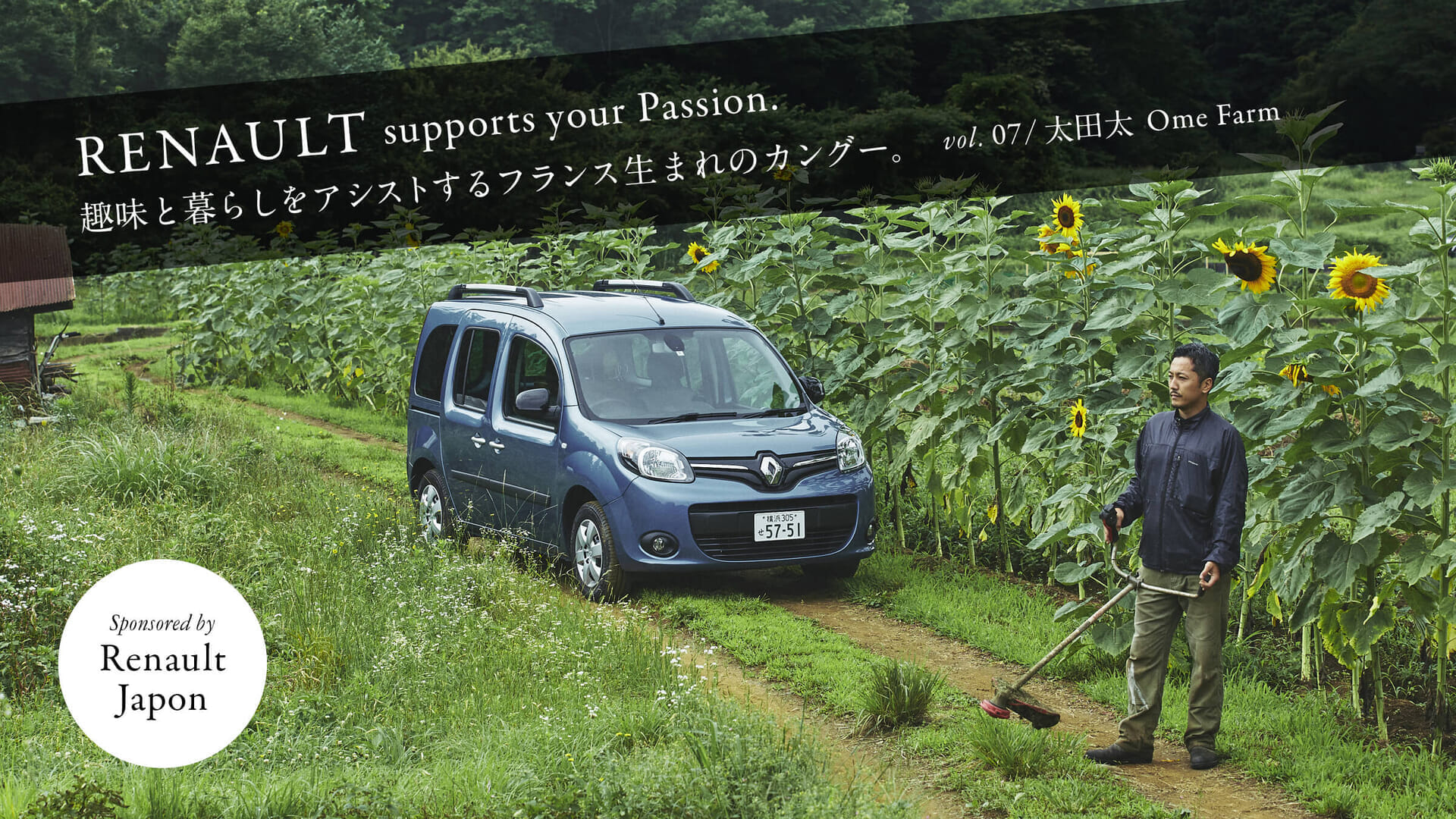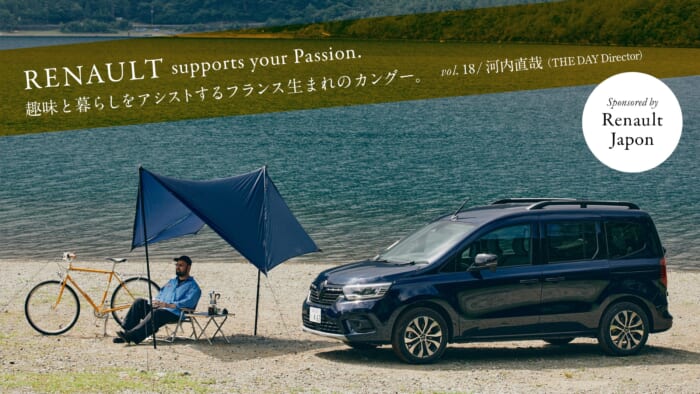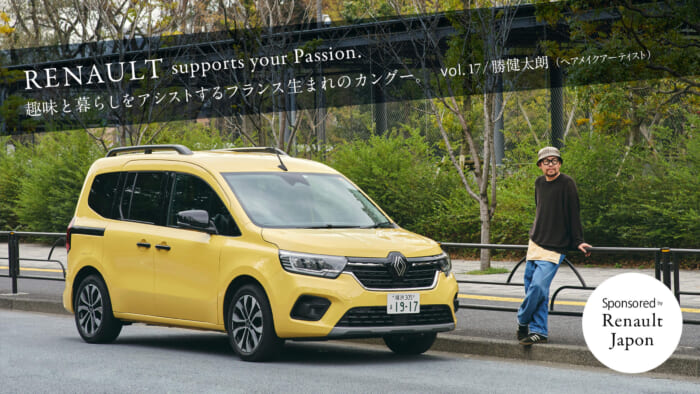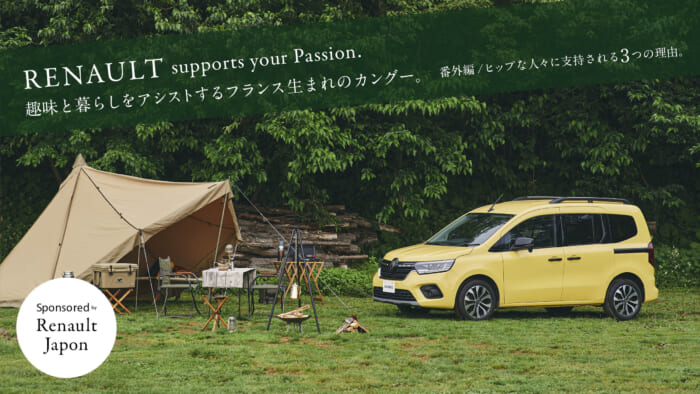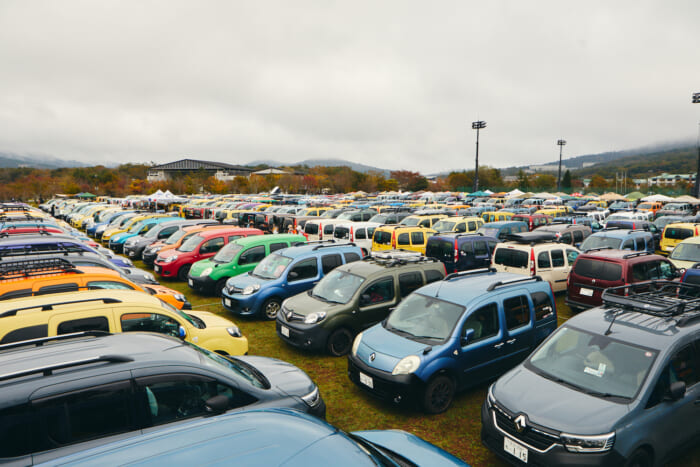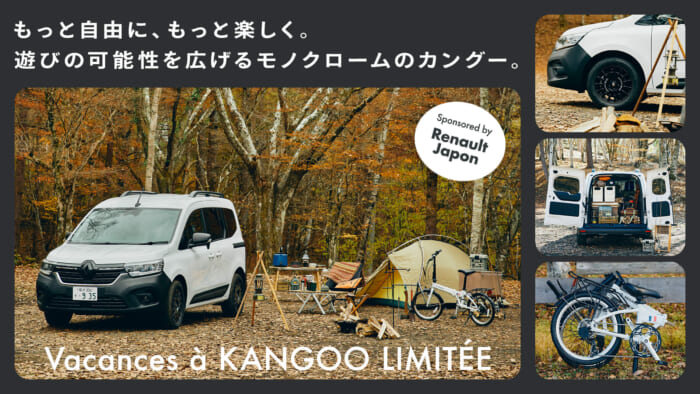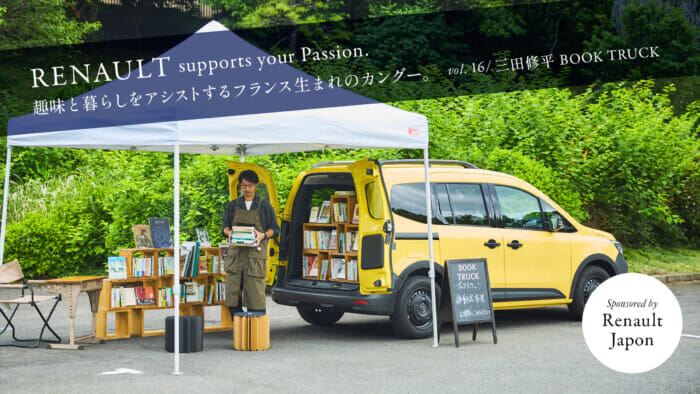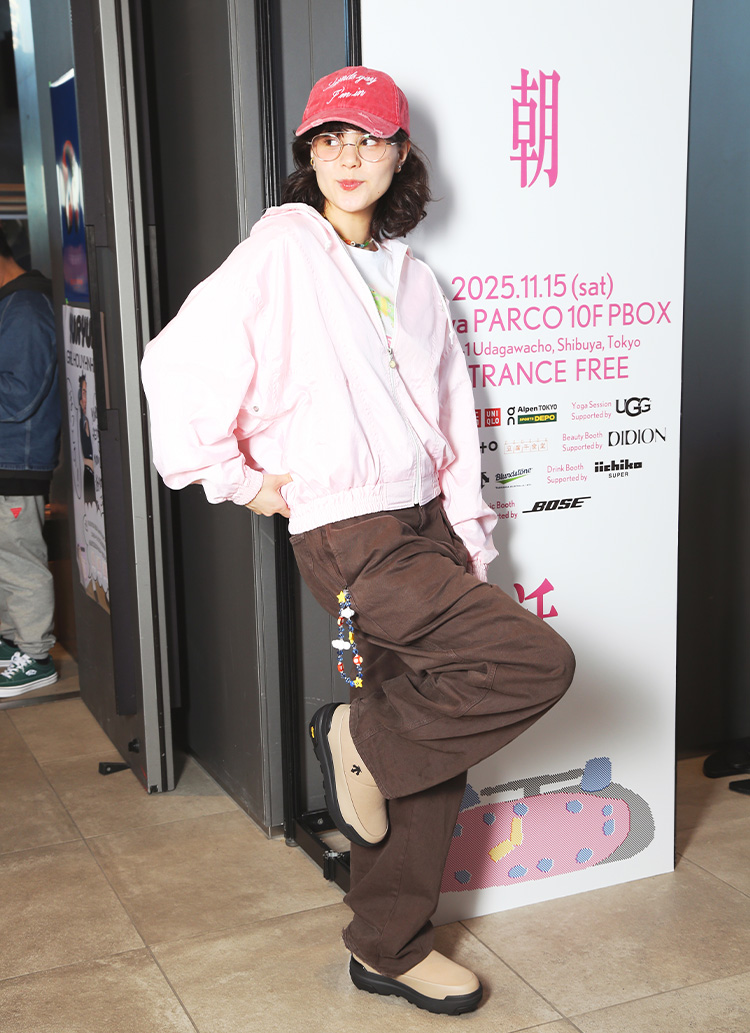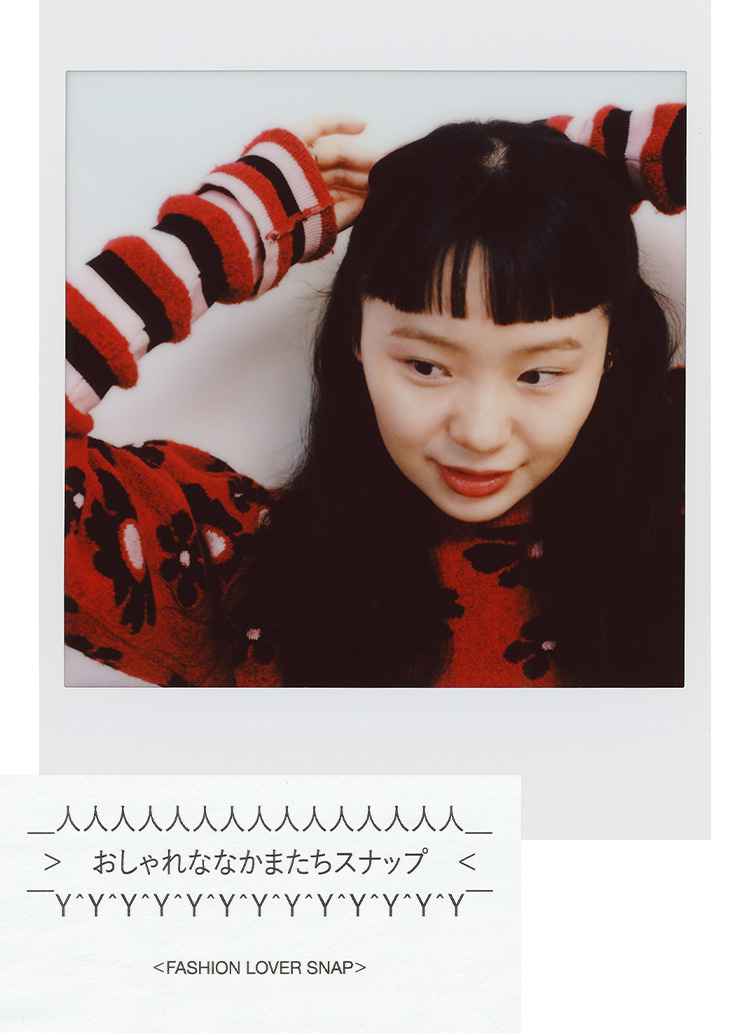. A car can create a private space after all.
Kangoo" making steady progress toward Ome. Every morning, Mr. Ota drives 1 hour and 20 minutes one way from his home in central Tokyo to Ome, where his farm is located. When we asked him what kind of car he likes on the way, he replied, "I am not that particular about the car itself. What is the heart of it?
. I think that the time spent in the car is more important than the car itself. . Of course, there are times when I look at old cars and think they are cool and sexy, but I also like big cars like the Kangoo. I also like big cars like the Kangoo. But I think the more important thing is how you use it.


As the car enters the highway and is heading toward its destination at a brisk pace, the city buildings gradually lower their height and turn into a residential area, and eventually, that, too, is replaced by a view of nature. What is Mr. Ota concentrating on while driving the car?
. time in the car is important to me . I often use an app to call my friends overseas. I like talking to people. This way, I can get firsthand information. I also listen to music and the radio. I listen to various genres of music, but I think I listen mostly to ethnic music. As I transition from the city to a natural landscape, I set the background music to match the scenery."

In the Corona Disaster, the importance of the car as a tool that allows people to travel in a personal space emerged amidst the crisis that many people felt about using public transportation to create a dense space.
. A car is a great way to create a private space. It's like having your own room right there in the car. You can pack whatever you want, listen to whatever you want, and go wherever you want. We use the car as a tool for work, so we have a destination in mind, but we still change the route every once in a while for a change of pace. No matter how loud we make it, no one complains, and it is the ultimate private time. I think a car is the only place where you can continue to do what you love.

The heart of Ome Farm is the seed, the soil , and the bees.
As we were talking about this, "Kangoo" arrived at the Ome Farm farm office in Ome. Here, they make original compost for growing vegetables, prepare harvested vegetables for shipping, do beekeeping, grow vegetable seedlings, and much more.



When I started farming, I had always wanted to do it in Tokyo. I thought that if I could produce vegetables of a quality that would satisfy everyone in the suburbs of Tokyo, and if I could do it on a certain scale, it would naturally become a business. We found a place where we could do that. The only place in Tokyo where we could find the organic farming we wanted to do, the understanding of young people who want to participate, clean water, and land with potential for expansion. Ome was the only place in Tokyo that had all of these conditions.

Ome Farm is characterized by its commitment to organic, recycling-oriented agriculture. No herbicides, pesticides, or chemical fertilizers are used, and the compost does not even contain animal feces. The vegetables are grown using farming methods that make the most of the power of nature.
. we only had six months of preparation time before we actually started growing vegetables. . During that six months, I studied. We did environmental research related to food, such as why people need to use pesticides and why salad dressings are necessary in Japan.

. and I did some research on soil. But there was no way a layman could understand the technicalities of microorganisms and chemicals. At that time, I came across an old man who was saying the obvious: 'Bad soil smells bad. When I heard that, it instinctively hit me. The compost used by ordinary farmers is a mixture of animal feces, right? He said that is what makes it nutritious. But I felt it was not right to feed my daughter vegetables that had sprouted from the compost. If it is stinky, it means that the animal's food has not been broken down in the stomach. He said that good vegetables can't grow in soil with that kind of stuff in it.


. and the most important thing is the seeds. In most farms, seeds are first generation hybrids, which have been improved by human hands, but we use pure, genetically strong seeds called fixed and native seeds. But we use pure, genetically pure seeds called "fixed" or "native" seeds.
Also, bees are very important in growing seeds. If there are bees, they pollinate the seeds on their own. So there is no need for us to do this work by hand. At that time, I was amazed at the cyclical power of nature. Ome Farm also engages in beekeeping and grows seedlings with the help of bees. This way, we are able to produce delicious honey. The taste of the honey also changes with the season, depending on the flowers blooming. That is also an interesting point.
While studying agriculture, Mr. Ota came to understand the relationship between soil and seeds, and conducted experiments based on his theory.

I prepared four types of soil: soil with no fertilizer, soil mixed with only chemical fertilizer, soil mixed with only animal dung ( and ), and soil mixed with chemical fertilizer and animal dung, and sowed fixed seeds and one hybrid seed in each. In other words, I created eight examples. Then, I found out something. The first generation hybrid seeds sprouted very quickly. After sprouting, the seeds grew fastest in soil with chemical fertilizers and livestock manure, and others sprouted one after another, but they were so weak that they were eaten by many insects and were torn to pieces. On the other hand, the fixed seeds did not grow as fast. The soil that we did nothing with was particularly slow, but it had a robust flavor and was less susceptible to being eaten by insects. So, as a result, we concluded that it is best to sow pure seeds in untreated soil.
. and started farming based on the results obtained.
. work in the field is the end of the line for us. The heart of the work is the soil ((), compost ()), seeds, and bees. As long as these are in place, we can produce good vegetables, depending on our management efforts.


